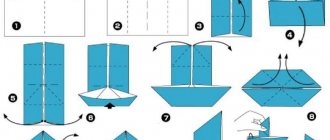Features of a child with ODD level I, ODD level II. Alalia (organization of RPPS, working methods)
Author: Tatyana Aleksandrovna Korekova , Category: Consultations for teachers · 2/2/2018 12:57:00
Good afternoon, dear teachers. At the first meeting, Olga Valerievna talked about children with disabilities and disabilities. The group of children with disabilities is not homogeneous; it includes children with various developmental disorders, the severity of which may vary. Let us remember what developmental disorders such children have.
Read all »
The world of bees as understood by children
I think that there is no child who has not heard about Winnie the Pooh. Very greedy when he tried to steal honey from the hive. Although Winnie is a rogue and the cute kids don't have to follow his example and steal the bees' honey. Bees also have their own world, each of which needs to be known and respected.
All children know that Winnie the Pooh tried to steal honey from a bee's hive, which was at the top of the tree. In fact, this is the place where natural bees living in Europe build their hives. A hollow tree provides a dry, dark place and a roof where bees can build their honeycombs. This way they are protected from sun and rain.
Hollows also provide ventilation, although even the bees do not need this, because they have their own “air conditioning” systems, which are very effective. The entrance is quite small. So it is much easier for the bees to guard the hive to protect it from foreign bees or wasps that want to steal the honey.
Bees need water in the spring to dilute their honey, and in the summer to cool the hive.
The beekeeper (the one who deals with the bees) is called upon to provide these conditions for the bees in wooden hives built by people. However, in these hives the bees have some restrictions but which helps the beekeeper to collect honey without harming the bees.
Lifespan
The lifespan of a bee directly depends on its place in bee society, as well as the time of birth.
How long does a worker bee live? Her lifespan is not long, and if she was born in spring or summer, it usually averages only a month. Such a short life expectancy is due to the hard work that the worker bee does to obtain nectar.
If a worker bee is lucky enough to be born in the fall, then she can live even six months, since she needs to survive the winter cold in order to be responsible for collecting honey in the spring and take part in its accumulation.
The lifespan of a drone is even shorter than that of a worker bee; two weeks after birth, it already becomes capable of fertilizing the uterus, and what is most interesting is that a few days after this very fertilization, drones usually die. It also happens that with the end of the honey collection period and the onset of winter cold, worker bees at this point drive out the drones that are no longer needed from the hive, after which they also die.
The queen bee lives the longest in the bee community. Typically, the average lifespan of a queen is 5-6 years, but for this she needs to be a valuable female and regularly give birth to new offspring.
Interesting Facts
- There are many myths and legends associated with bees; for example, according to the beliefs of the ancient Egyptians, the soul of the deceased left a person in the form of a bee.
- Even primitive people noticed that bee nests were valuable prey, and as a result they hunted for them. But this was a dangerous and difficult task, since the bees could sting the unlucky honey miner to death.
- In ancient Greece, beekeepers first learned to insert partitions into bee hives and use them to collect excess honey reserves. And the beginning of “scientific beekeeping” was laid by the great philosopher and scientist of antiquity, Aristotle.
- The famous ancient Greek physician Hippocrates wrote a whole scientific treatise on the benefits of honey for human health, and according to legend, a swarm of bees settled on the grave of the famous doctor, producing special healing honey that helps against many diseases.
DRAGONFLY
Dragonfly, dragonfly, Curious eyes, Now it flies forward, Now it hangs like a helicopter, Above the blue water, Above the meadow grass, Above the forest clearing... M. Shapovalov Dragonflies are one of the most beautiful insects. They can be seen on a sunny summer day over the water. They come in different colors: blue, green, black... In Japan, dragonflies were considered a sign of victory, poems were written about them and depicted in paintings. The dragonfly has four mesh wings, this helps it fly quickly, and its body, elongated like a rudder, guides it in flight. The flight speed of a dragonfly is 96–144 kilometers per hour. Her big eyes shimmer with all the colors of the rainbow! They occupy almost the entire head and consist of 28 thousand small eyes.
The dragonfly is voracious and constantly hunts. It feeds on small insects: mosquitoes, beetles, flies, moths. In an hour, a dragonfly can eat 40 flies. Dragonflies are active all summer and hibernate in the fall. These insects can even predict the weather. If it does not spoil, they behave calmly, but before bad weather they gather in flocks and begin to make loud sounds, fluttering their wings. The largest dragonfly found in our country is the rocker. It is usually brownish-red in color, but blue dragonflies are also found. The wingspan of the rocker dragonfly is 10, and their body length is 8 centimeters. You see everything, dragonfly, TV eyes! Your chirping flight is like a helicopter in the sky, and during an “emergency” landing you boldly put out your paws. E. Koryukin Dragonfly larvae - they are also called naiads - eat a lot. With the help of a strongly extended downward lip, they grab fry, tadpoles and small beetles. The larva can eat up to 50 fry per day. In a year, a big-eyed beauty will fly out of the unsightly larva. She is still weak, her wings and body cover are soft, but after two hours she can already fly perfectly. RIDDLE A small helicopter flies back and forth. Big eyes, name - ... (dragonfly)
- To the begining
- Back
- 1
- Forward
- In the end
Lifestyle
Bees are collective insects that live in large families - hives - and have a strict hierarchy and division of labor. The composition of a bee family includes:
- uterus,
- drone,
- worker bee.
In bee society, matriarchy reigns and it is the females who are entirely responsible for ensuring the life of the hive, while the males, also known as drones, exist only to procreate.
The queen bee is the queen of the hive, it is she who is responsible for the reproduction of offspring, she is also the creator of the hive and at first is engaged in its arrangement, until in this matter she is replaced by the worker bees that are born.
The task of male bees, drones, is only one - to fertilize the queen.
The entire economic life of the hive rests with worker bees, female bees incapable of sexual reproduction. They are the ones who hardworkingly collect nectar from flowers, protect the hive in case of danger, arrange its arrangement, transport honey, etc.
How do bees produce and obtain honey?
All children know that bees produce honey. Unfortunately, many children do not know how much bees have to work to produce honey. Even fewer know that the bee is a very smart insect.
Composition and size of the bee colony
A hive has one queen, several hundred male bees called drones, and thousands of infertile female bees called worker bees. The total number of bees in the hive is approximately 80,000. Worker bees do all the work in the hive. Some of them have their own responsibilities: building honeycombs, cleaning and protecting the hive, feeding the queen and drones, their care and feeding the larvae with royal jelly, pollen, honey, building queen cells that lay eggs, cleaning cells, maintaining heat and moisture in the hive, collecting pollen, nectar and water.
What is the life of worker bees like?
A worker bee lives from 4 to 6 weeks. For three weeks after his birth, she lives inside the hive. His first duty is to take care of the larvae, which must feed on the pollen and honey that are taken into the warehouse.
When a worker bee is 12 days old, the glands in her body that produce wax are activated. Beeswax is very important because with it, they build honeycombs. As you can see in the picture, the small ridges are made from hexagons. The question is how to make these bee hexagons so perfect without stitching.
People cannot even draw, let alone build such hexagons without the help of various devices and the calculations are complex. But bees just 12 days old can build the perfect honeycomb. Even do it without the help of any tools.
The bees start building hexagons on the sides and meet in the middle. You may have noticed that all frames are the same height. I wonder how a bee will do this job if even humans cannot. This is one of the many secrets of nature.
The duties of a worker bee do not end there. For three weeks, the bee has the responsibility of distributing royal jelly and pollen in the combs, cleaning the hives and throwing away trash and dead bees. In the last round of these three weeks, they defend the bee hive from enemies. When three weeks have passed and the bees are sufficiently developed, they leave the hive and go to collect pollen and water.
The worker bees become completely tired and die after two or three weeks of work.
During their short life, worker bees work almost non-stop. You need to know that no one teaches bees what to do. They start working as soon as they are born. Think about what it would be like if a newborn got out of bed and would make the bed, wash itself, and take care of other children. This is something that is impossible isn't it? But bees are capable of such things, the result of thousands of years of evolution.
Why and why do bees dance?
Nobody told you that bees dance? Some bees look for a food source outside the hive. After flying all day, finding their own food source, they then take as much royal jelly as they can carry and return to the hive.
There is a lot of royal jelly from this source, but a bee cannot collect it alone, without the help of other bees. All scout bees remember where food sources are and must return quickly and lead other bees from the hive. The bee begins to move to the front of the hive, moving in a figure eight pattern.
The bee returned, shaking its belly in the direction of the hive as many times as necessary to communicate to the other bees the distance to the food source. At the end of the dance, the bees realize where the new food source is, so they rush to leave the hive to collect the necessary pollen.
Reproduction
Natural reproduction of bees is carried out by laying eggs by the queen, and she can lay eggs both after fertilization by a drone, and without it, with the difference that drones appear from unfertilized eggs, and full-fledged individuals from fertilized eggs.
The path from an egg to a full-fledged bee goes through several stages: first, the egg turns into a larva, then into a pre-pupa and a pupa, from which an adult bee is already formed.
When a bee colony reaches a large size, it divides - swarming. Some of the bees remain in the old place with the old queen, and some with the new queen go to build and equip a new hive.
Bee from a plastic container
Crafts from Kinder eggs
A bee made from a plastic container from a Kinder surprise is durable. This toy is not afraid of moisture or temperature changes.
To make a bee you will need:
- yellow plastic container (several if a swarm is being made);
- an awl, a thin screwdriver or a thick sewing needle for making holes;
- scissors;
- satin ribbon 6 mm thick black for legs;
- black beads;
- black stained glass paint or thin electrical tape for stripes;
- transparent plastic bottle;
- black marker;
- small self-adhesive eyes for toys;
- glue gun
Yellow plastic containers
Important! Only yellow containers are chosen for the bee. If the toy is intended to be used outdoors or in the garden, the strips are made from indelible materials (acrylic paints, marker, electrical tape).
After all the materials are prepared, start creating the bee.
- Creating a loop. A hole is made in the center of the plastic container. A satin ribbon of black, yellow or another color is inserted into it so that the ends are inside. The edges of the tape are tied with a knot. This creates a loop on which the bee will hang.
- Creation of legs. You will need two pieces of satin black ribbon 10 centimeters long. Make 4 holes on the bottom of the container. Each piece of tape is pulled through 2 holes. A black bead is threaded onto the ends and tied with a knot. You get legs.
- Creating stripes. Use a black permanent marker or electrical tape to mark the container with black stripes. 3 strips 0.5 centimeters thick at the same distance are enough.
- Creating wings. On a transparent bottle draw 2 wings connected in the center. For greater effect, the contours of the wings are outlined with a marker, and veins are applied in the center. The wings are glued with a heat gun.
- Creating a muzzle. The eyes are glued on with a hot-melt gun, the nose and mouth are drawn with a permanent marker or acrylic paints.
You might be interested in how a novice needlewoman can knit a beautiful toy
A handmade bee craft will perfectly decorate trees in the country or on the playground.





